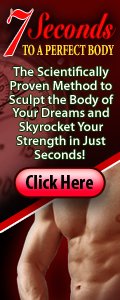Isometrics for Anerobics and Conditioning
by Richard
Firstly I would like to say thank you for having the best isometric site on the web.
Even with the free isometrics you can tell that they increase strength incredibly. However, strength is only one part of fitness and there needs to be anaerobic excercise and conditiong acording to ross enamait.
Do you have any isometric anarerobic or conditioning excerecises? Thank you.
Comments for Isometrics for Anerobics and Conditioning
|
||
|
||
|
||
|
||






